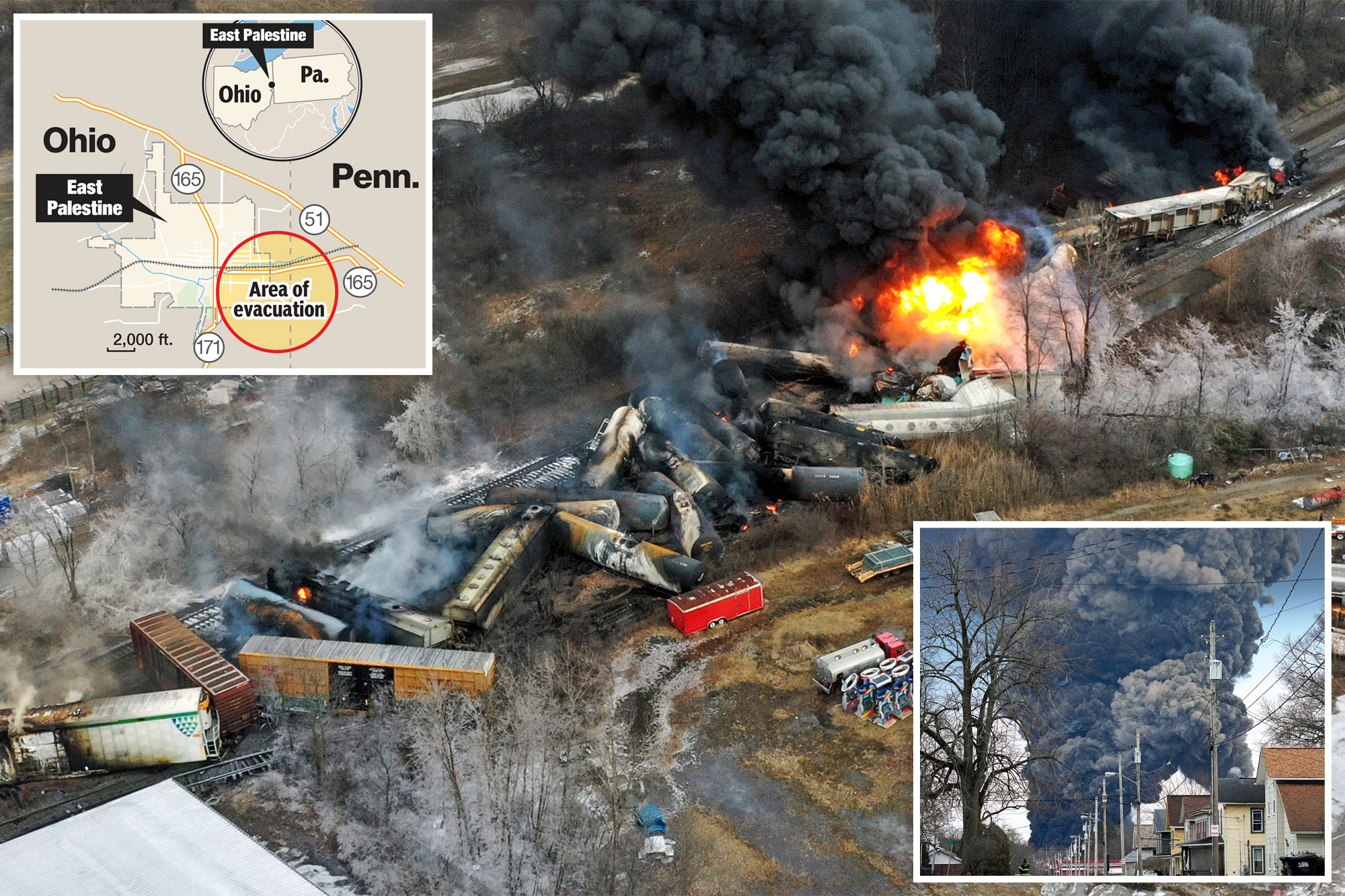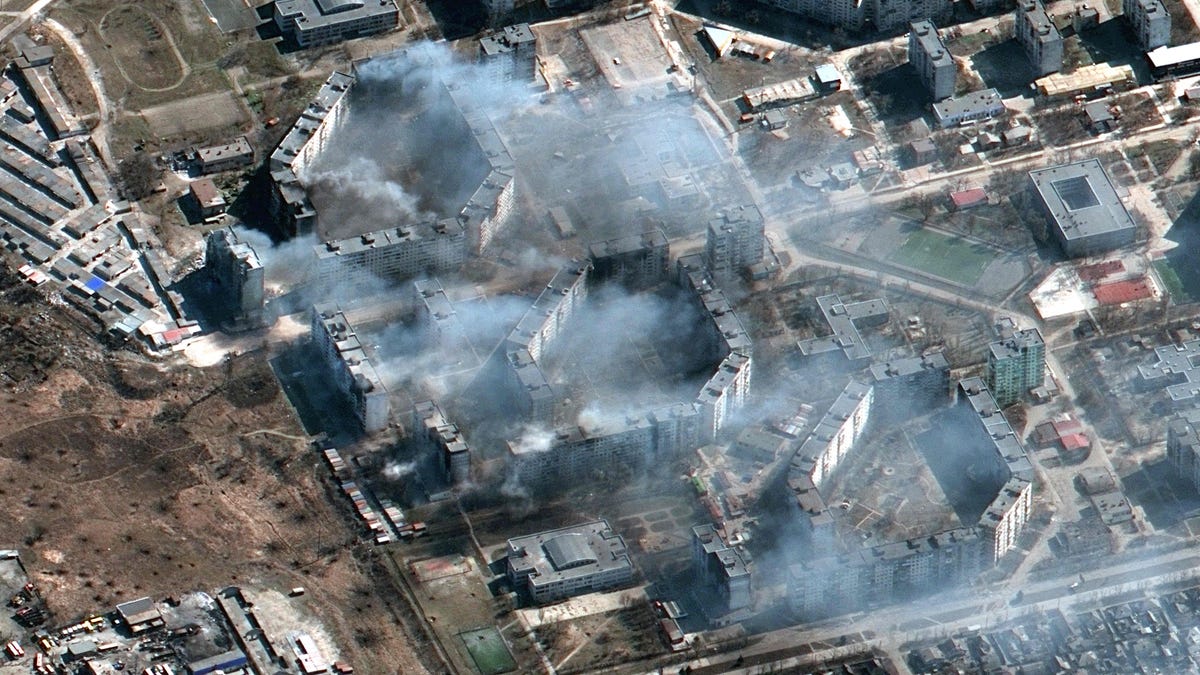Long-Term Effects Of Toxic Chemicals From Ohio Train Derailment On Buildings

Table of Contents
Types of Building Damage from Chemical Exposure
The release of toxic chemicals, notably vinyl chloride, butyl acrylate, and ethylhexyl acrylate, poses significant threats to the structural integrity and overall condition of buildings in the affected area. These chemicals can interact with various building materials in detrimental ways.
-
Chemical Contamination: The pervasive nature of chemical contamination means that damage isn't limited to external surfaces. Air and water infiltration can carry these toxins deep within building structures.
-
Corrosion and Weakening: Vinyl chloride, for example, is known for its corrosive effects on metal components, potentially weakening structural steel support beams, pipes, and other metal fixtures over time. This long-term weakening could lead to instability and significant safety hazards.
-
Material Degradation: The chemical interaction can also degrade other building materials, including plastics, paints, and even certain types of wood. This degradation can manifest as discoloration, cracking, or complete failure of building materials.
-
Paint Damage and Surface Degradation: Paint and other surface finishes are particularly vulnerable. Exposure to these chemicals can lead to discoloration, peeling, and overall deterioration of the building's aesthetic appeal and protective layer.
-
Indoor Air and Water Contamination: The most insidious damage may be unseen – contamination of indoor air and water supplies. This hidden contamination can pose serious health risks and necessitate extensive remediation efforts. Mold growth can also become a significant problem due to increased moisture from cleanup efforts.
Assessing and Mitigating Long-Term Risks
Determining the extent of damage and implementing effective remediation strategies are crucial for protecting both human health and property value. A proactive approach is vital.
-
Professional Building Inspections: Thorough building inspections by qualified professionals are essential to identify all forms of damage, both visible and hidden. These inspections should include a comprehensive visual assessment, as well as testing for chemical contamination in building materials.
-
Environmental Testing: Comprehensive environmental testing, including air quality testing and water testing, is vital to assess the extent of chemical contamination. This testing should be conducted both inside and outside the affected buildings to establish the full scope of the problem.
-
Remediation Strategies: Remediation strategies vary depending on the type and severity of the contamination. These strategies can range from simple cleaning and surface treatments to more extensive decontamination processes, potentially involving demolition and rebuilding of severely affected areas.
-
Long-Term Monitoring: Ongoing monitoring of air and water quality is critical for evaluating the effectiveness of remediation efforts and for ensuring the long-term safety of occupants. This long-term monitoring should be conducted regularly to detect any potential resurgence of contamination.
-
Safety Measures: Remediation efforts should adhere to stringent safety protocols to protect workers and residents from further exposure to hazardous chemicals. This includes appropriate personal protective equipment (PPE) and adherence to established safety guidelines. The cost of remediation can be substantial and depends heavily on the extent of the damage and the necessary measures.
Health Implications and Property Value
The long-term exposure to residual chemicals from the derailment poses serious health risks and can significantly impact property values.
-
Health Risks: Exposure to toxic chemicals can lead to a range of respiratory problems, skin irritations, and other long-term health effects. Children and the elderly are particularly vulnerable to these health risks.
-
Respiratory Problems: Many of the chemicals released are known respiratory irritants, and long-term exposure can exacerbate existing respiratory conditions or lead to the development of new ones.
-
Property Devaluation: Buildings affected by chemical contamination experience significant devaluation, making them difficult to sell or insure. The stigma associated with environmental contamination can greatly impact property values.
-
Insurance Claims: Property owners may be able to file insurance claims to cover remediation costs and potential losses in property value. However, success in obtaining compensation may depend on policy specifics and the extent of the damage.
-
Legal Recourse: Residents and property owners may have legal recourse to pursue compensation from responsible parties. Legal action may involve seeking damages for property damage, health problems, and other related losses.
Long-Term Monitoring and Future Preparedness
The Ohio train derailment underscores the need for long-term environmental monitoring, improved emergency response, and stronger regulations.
-
Environmental Monitoring: Ongoing monitoring programs are vital to track residual effects and to assess the long-term impacts of the chemical release. This ongoing surveillance can inform remediation strategies and help ensure the safety of the community.
-
Preventative Measures: Investing in preventative measures, such as improved transportation safety regulations and enhanced infrastructure, is crucial for preventing future derailments and mitigating their environmental impacts. This includes stricter oversight of hazardous materials transport.
-
Emergency Response: The response to the derailment highlighted the need for improved emergency response plans, including better coordination among different agencies and more effective communication with affected communities. This enhanced preparedness will lessen the severity of future incidents.
-
Regulatory Improvements: Stronger regulations are needed to prevent similar incidents, to ensure adequate safety measures are in place during the transport of hazardous materials, and to hold responsible parties accountable for environmental damage.
-
Community Resilience: Building community resilience through education and preparedness programs can help communities better withstand and recover from future environmental disasters. This includes educating residents about the risks and what steps to take in case of a similar incident.
Conclusion
The Ohio train derailment presents a concerning case study regarding the long-term effects of toxic chemical exposure on buildings. Understanding the potential damage, implementing effective remediation strategies, and advocating for improved safety regulations are crucial steps to mitigate risks and protect communities. The long-term consequences extend beyond the immediate aftermath, impacting the health, safety, and economic well-being of residents for years to come. If you are concerned about the long-term effects of toxic chemicals from the Ohio train derailment on your building, seek professional assessment and remediation services immediately. Don't wait – proactive action is key to protecting your property and your health. Learn more about the long-term effects of toxic chemicals and available resources today.

Featured Posts
-
 Hegseth Faces Backlash Over Pentagon Claims And Leaked Signal Messages
Apr 22, 2025
Hegseth Faces Backlash Over Pentagon Claims And Leaked Signal Messages
Apr 22, 2025 -
 Kyiv Faces Trumps Ukraine Peace Plan A Ticking Clock
Apr 22, 2025
Kyiv Faces Trumps Ukraine Peace Plan A Ticking Clock
Apr 22, 2025 -
 Execs Office365 Accounts Breached Millions Made Feds Say
Apr 22, 2025
Execs Office365 Accounts Breached Millions Made Feds Say
Apr 22, 2025 -
 Harvard Faces 1 Billion Funding Cut From Trump Administration Amid Growing Tensions
Apr 22, 2025
Harvard Faces 1 Billion Funding Cut From Trump Administration Amid Growing Tensions
Apr 22, 2025 -
 Us Pushes For Peace As Russia Unleashes Devastating Aerial Attacks On Ukraine
Apr 22, 2025
Us Pushes For Peace As Russia Unleashes Devastating Aerial Attacks On Ukraine
Apr 22, 2025
